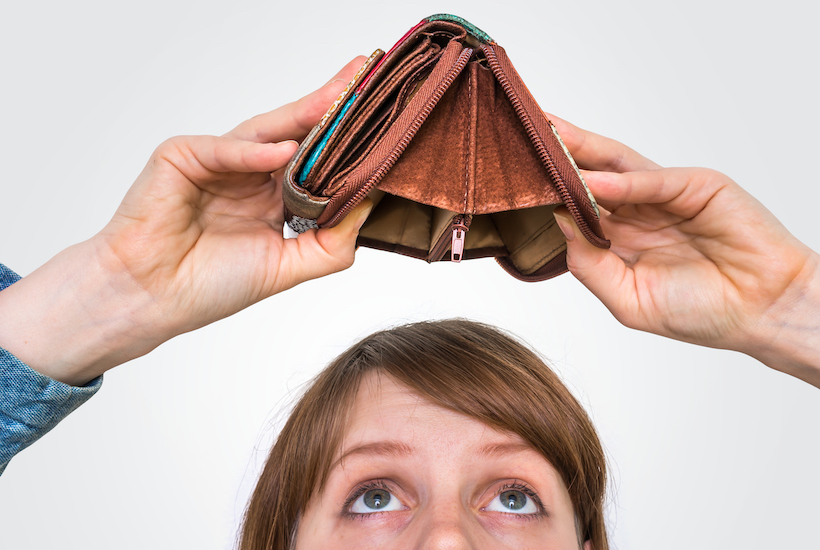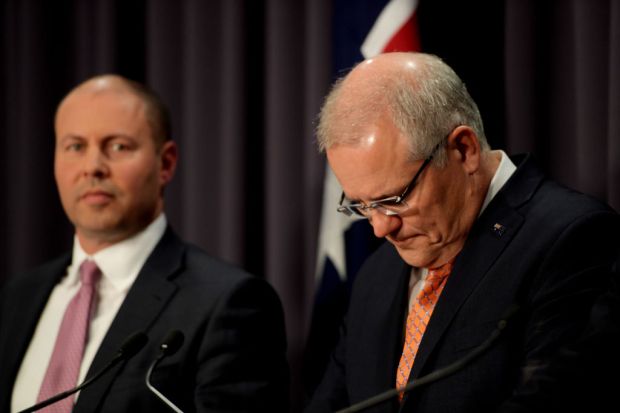My family migrated to Australia in the 1950s with barely enough cash to bless themselves. Such is the story of most migrant families who steadily streamed into Australia after WWII. And trust me, they didn’t migrate here for the cuisine. They came with a desire to work hard in anticipation of economic opportunities and the chance of a better life far from war–torn Europe.
Fast forward 60 years and most of those migrant families have done quite well for themselves. They’ve worked hard, saved money, started businesses, accumulated assets and kept their families close. I remember my Nonno used to say that if you can’t pay cash, you can’t afford it.
So, why is this relevant to post-COVID19 Australia?
Well, we have just slammed head-on into the biggest economic downturn, arguably since the Great Depression, and at least since the early 90s recession. And people across the country are hurting. The difference this time is the staggering level of household debt.
As at September 2019, Australian household debt was 119.8% of GDP, as at April 2020, consumer credit in Australia was teetering at $2.99 trillion, and as at December 2019, the household savings rate was 3.6% of net disposable income.
Those are all pretty dismal numbers but let’s make a generational comparison to see how we’ve got to where we are. In the early nineties, household debt was approximately 45% of GDP, consumer credit was approximately $350 million and the household saving rate was approximately 10% of net disposable income. In short, and even accounting for inflation, we have progressively saved less and accumulated more debt.
A lot more debt.
Much of that household debt is accounted for by home mortgages. In the early nineties, average house prices were about four times average disposable income, that has increased to seven to eight times average disposable income pre-COVID19. Now, while immigration and the availability of credit has *cough* fueled economic growth, it has also fueled asset prices. But here’s the kicker. If you build a house on the property you acquire, the debt associated with that purchase will at least contribute to construction sector economic growth. If you buy an established property, that debt produces a big fat doughnut of economic growth, but still fashions a lovely set of golden handcuffs for its new owner. Governments have historically preferred that housing grants be limited to new builds as established home purchases are all buck and no bang.
In the context of the housing sector, when commentators talk about loosening lending requirements to stimulate economic growth that is code for ‘people should be encouraged to buy houses they can’t afford, and kick the payment can down the road, in the name of propping up property prices’. Awkwardly, since 2017, and even with record low interest rates, new residential builds have declined despite median house prices in most capital cities continuing to climb. That is, recent cheap credit has continued to drive prices but has produced little economic growth. Couple those factors with stagnating wage growth, and it’s a one-way street to destination f*cked insofar as housing affordability is concerned.
In the context of consumer-driven economic growth, we have similarly grown accustomed to hearing about the need to stimulate consumer demand. The word ‘stimulate’ usually involves a government hand out or increased availability of personal credit. The word ‘stimulate’ cuddled up next to ‘consumer demand’ means ‘buy shit you don’t need with money you don’t have’. It’s another example of trying to register economic growth today and hoping that no one will notice the corresponding increase to government or consumer debt.
Speaking of consumer debt…
If you peek under the skirt of household debt, you’ll see that Australians currently have almost 15.4 million credit cards with an average balance of $3,264. Extrapolate those numbers out and we have a whopping $50.4 billion on credit cards, with an aggregate monthly spend of $26.5 million. Compare that to 1995, when we had 6.7 million credit cards with an average balance of $874, totally approximately $5.86 billion. Not only are we carrying some serious debt on credit cards, the interest rates are pernicious and the associated fees are eyewatering. When you consider those actual or contingent liabilities as against the value of the mass–produced consumer goods you’re getting in exchange, it becomes evident that credit cards are a veritable Hotel California and that pink champagne on ice is not for free. Suddenly, all that #yolo and #treatyoself doesn’t seem so #amazing after all, does it?
Anyway, now that the economic proverbial has hit the fan, plenty of people are panicking because they don’t have much, if anything, in way of savings and have reduced, or no, ability to service existing debt. How many people have you heard say: I’ll just dip into my saving and I should be good for the next six months for so?
Exactly. Probably no one.
Instead, Afterpay and other generous interest-free arrangements are being used to buy everything from luxury goods to whitegoods as a mechanism to cope with isolation-induced boredom. It’s as if people are in denial about a potential economic shock and are haplessly setting themselves up for a bigger fall instead of being cautious and tightening their belts.
Ultimately, how good or bad debt is comes down to affordability, purpose and appetitive for risk. As a country, we seem to have lost sight of this and have become totally dependent on debt regardless of affordability, purpose or appetitive for risk.
Now, my Nonno was only educated to Year 5 but, as a general rule, I feel like his quip on debt remains pretty sound. And it might be uncomfortable holding the mirror up, but we got to where we are because we have unreasonable expectations as to time and effort it takes to accumulate wealth and assets. We have grown accustomed to buying stuff on credit because we can’t be bothered saving for it.
We have blindly and willingly made ourselves grist for the mill.
Caroline Di Russo is a lawyer, businesswomen and unrepentant nerd.
Got something to add? Join the discussion and comment below.
Got something to add? Join the discussion and comment below.
Get 10 issues for just $10
Subscribe to The Spectator Australia today for the next 10 magazine issues, plus full online access, for just $10.


























Comments
Don't miss out
Join the conversation with other Spectator Australia readers. Subscribe to leave a comment.
SUBSCRIBEAlready a subscriber? Log in